This is a written interview with the young and talented icon painter Milica Mišić. She was born in 1991 in Teslić (Republika Srpska/BiH). She completed her undergraduate and master’s studies at the Serbian Orthodox Church’s Academy for Art and Conservation, majoring in Church Art and Icon Painting in the class of Dr. Todor Mitrović. Her Master thesis was published as a book under the title “Martyrs from Vlajić–Testimony of a Forgotten Crime”, published by the Eparchy of Zvornik and Tuzla, 2019. She’s been a member of the ULUPUD (Association of Applied Arts Artists and Designers of Serbia) since 2019. She is the author of several independent exhibitions and a participant in several joint exhibitions, and she attracted our attention with an unusual icon called “Prayer of parents before the Throne of the Lord Jesus Christ and the Holy Mother of God for the sin of infanticide”.
Looking at your works, one could not say that you are a classic icon painter. You introduced a personal touch in the choice of materials and the style of icon painting. What is it actually about and how did you develop that specific iconic expression?
Like handwriting, the artistic sensibility of a painter is unique and leaves a unique stamp on the artist’s work. Painting expression matures over time and is inseparable from the changes that take place in the artist himself. The academy imparts theoretical knowledge and practical skills, but also gives us guidance on how to continue developing independently, once our education is completed. It is important to maintain healthy self-criticism, to seek constructive advice, and through fasting and prayer to clear your spiritual vision and get rid of everything that is superfluous and that burdens us. In this way, we develop the gifts we have been endowed with and thus remain faithful to the words from the Holy Scripture written in the story of talents. That’s how the development of my artistic expression has unfolded and continues to unfold.
Since 2019 you have been a member of ULUPUDS. In the last 7 years, you’ve had quite a number of exhibitions for a young artist. Which exhibition would you single out as special? What are your plans for the future?
All exhibitions bring wonderful memories, but perhaps a special one is the first solo exhibition in my hometown, Teslić, in 2019, held during the event called Days of King Dragutin, i.e. Saint Theoctistus. In a way, that exhibition was a retrospective because the works exhibited were created in the period between 2012 and 2019, which covers the icons painted during my university education. So this exhibition marked an and to a chapter of learning, maturing and student life.
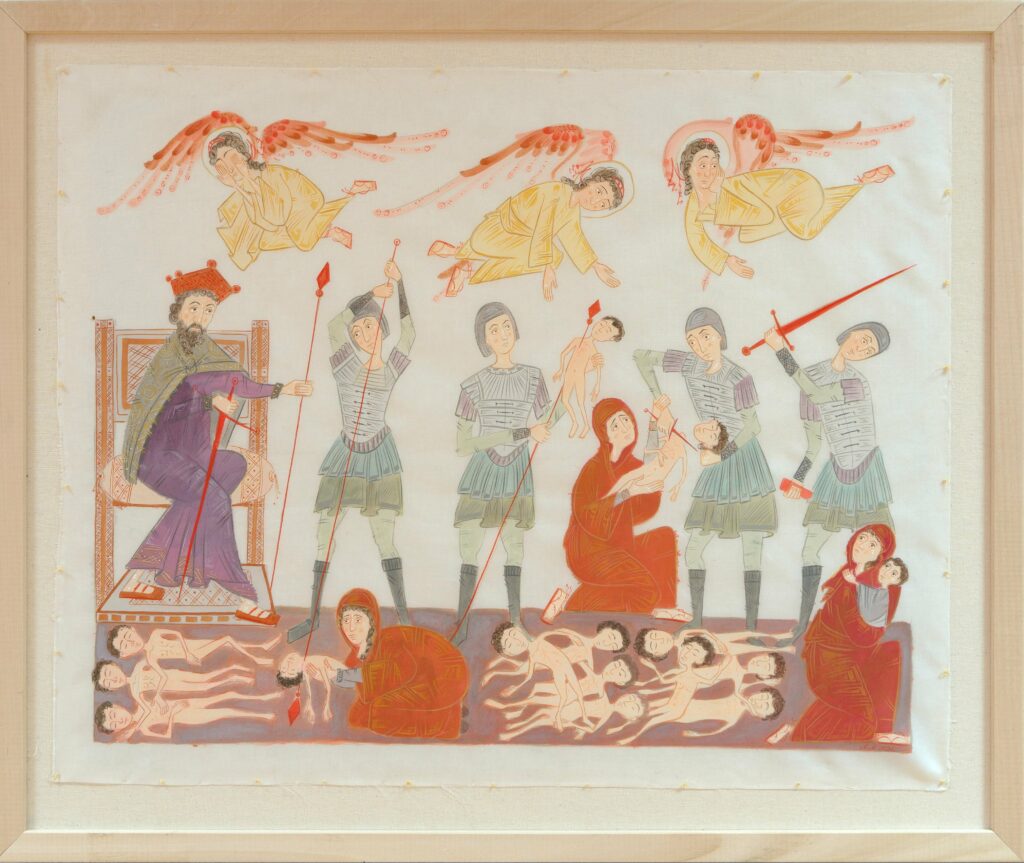
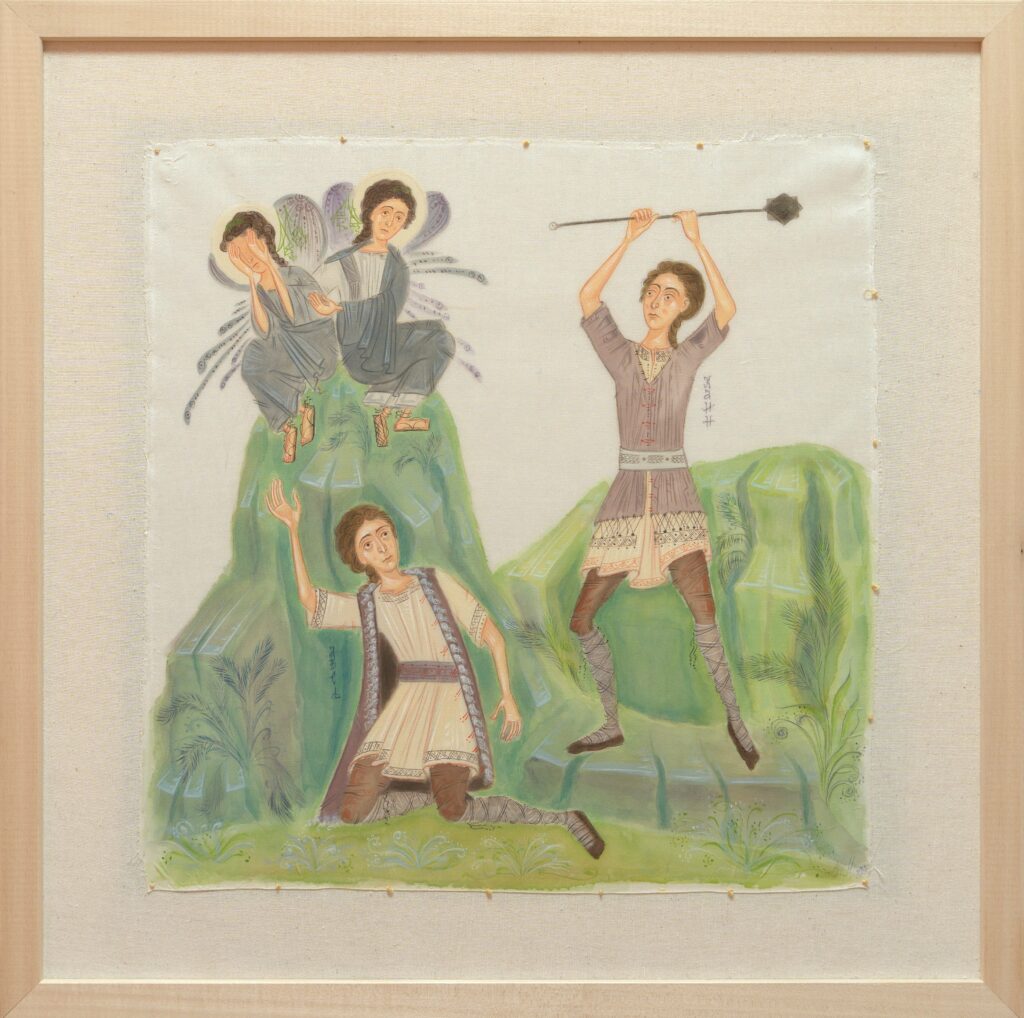
Another exhibition that I would single out is Svyat, Svyat, Svyat, the Lord Savaot (Holy, Holy, Holy, the Lord of Hosts). It was my first independent exhibition in Belgrade in 2020 . The concept of the exhibition was thought out in detail, inspired both by the Liturgy and the Holy Scriptures, with special reference to the Old Testament and the Heavenly Forces. The exhibition offered visitors works made in different techniques, such as egg tempera on wood, encaustic, Punic wax and egg tempera on silk.
Our attention was particularly caught by your work entitled “Prayer of the parents before the Throne of the Lord Jesus Christ and the Holy Mother of God for the sin of infanticide.” So far, we have not been able to find anything similar anywhere. Can you tell us something more about this icon, which is very specific.
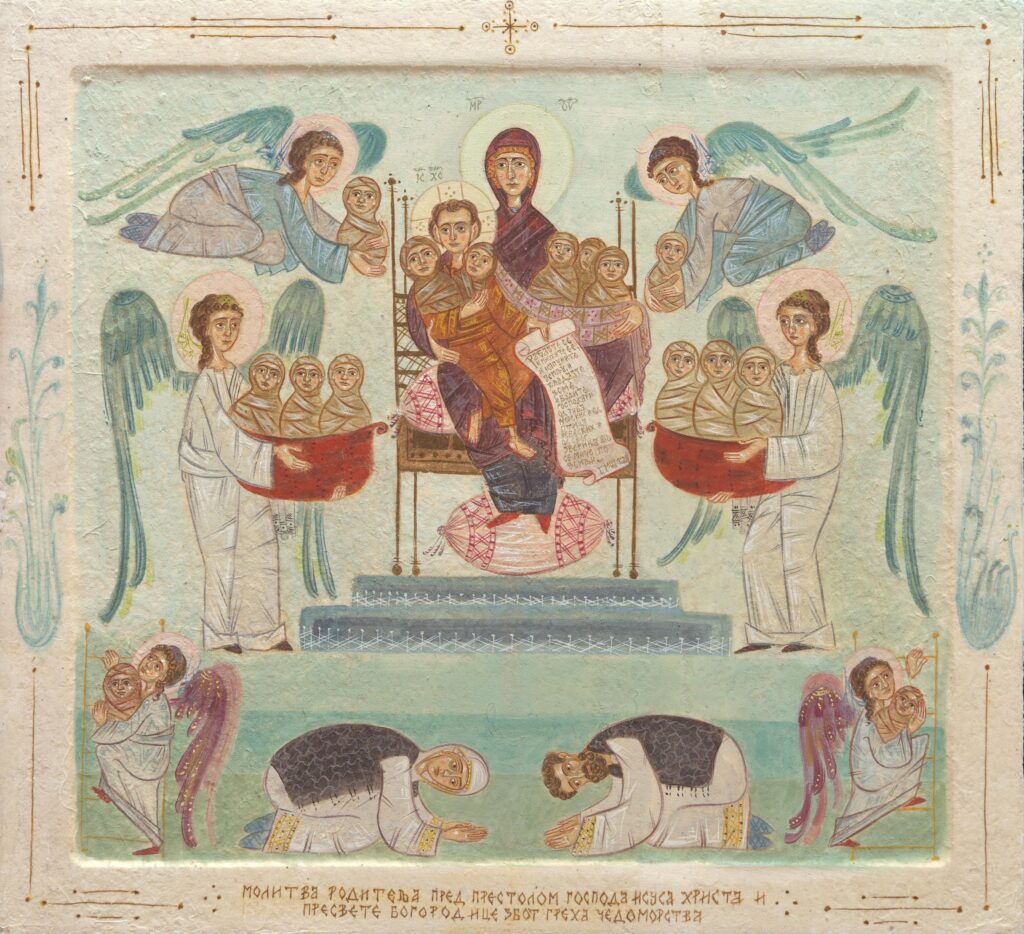
That icon is part of a cycle of works that are combined under the title “Prayer Remembrance Resurrection”, and are dedicated to innocent victims, that is, children. The parents’ prayer for the sin of infanticide is a work that occupies a very important place in that cycle because it shows us how terrible are the consequences of the choices we make, and the result is autogenocide. The icon shows the Holy Mother of God with the Lord in her arms sitting on the throne, while angels are offering children’s souls to them, and in the lower part we see parents kneeling in prayer. A spiritual crisis, which entails a personality crisis and an identity crisis, is something that we should be particularly concerned with, because a healthy family is the foundation of every society, and it is seriously threatened in our time. When talking about infanticide, only the role of the mother is often emphasized, that’s why it was very important to paint the father as well, because the Apostle Paul says in the Epistle to the Ephesians: “For the husband is the head of the wife, as Christ also is the head of the Church…”, in the following lines the apostle continues: “Husbands, love your wives, even as Christ also loved the Church, and gave himself for her…”
Reflecting on the composition, I thought that the presence of parents is very important precisely because of the family’s vulnerability, and also traditional values that can only be nurtured in a spiritually healthy community. Infanticide or abortion is an act that leaves wounds on the body but mostly on the soul of the woman, so it is important to talk about this topic. A living being has lost its right to exist, and the woman carries the burden of that decision with her for the rest of her life. However, under the veil of propaganda that we are all familiar with, the truth becomes painfully clear only after the act of infanticide is committed.
I hope that works like this icon will attract viewers, especially young people, and make them stop and think about their life, which is inseparable from life with others, to understand how connected we all are and how individual decisions inevitably affect the whole community. But also, that a healthy community can provide great support, especially in painful moments. Also, such works raise the question of the relationship between men and women in modern society, because if the result is infanticide or death, it means that the foundation on which the community was built is unstable. The question arises as to how will we as a society respond to these existing instabilities? How did we manage to nurture autogenocide and set it as a benchmark for successful modern life? When did we become so spiritually blind that we devalue the miracle of creating new life, looking for excuses in science?
It’s interesting how many questions a single work can raise, isn’t it? But the icon, above all, calls for prayer and repentance. May there be comfort and salvation for all those who have pain in their souls, and a reminder to the whole society to stop in their unreasonable haste and kneel in prayer before the throne of Our Lord, Jesus Christ and His mother, the Most Holy Theotokos.
You defended your master’s thesis at the Serbian Orthodox Church’s Academy for Art and Conservation, majoring in Church Art and Icon Painting, in the form of the printed book “Martyrs from Vlajić” published by the Eparchy of Zvornik and Tuzla. How was the idea for this kind of work born and with what goal?
Martyrs from Vlajić is a master’s thesis that was defended at the Serbian Orthodox Church’s Academy for Art and Conservation in 2018 and was born out of a personal desire to portray the characters of the new martyrs from the period of the Second World War. When I talked about my desire to choose a topic that I would theoretically and practically prepare during my master’s studies, Father Miladin Vuković, archpriest in Teslić, introduced me to the suffering of the villagers in the village of Vlajići, which is a few kilometers away from the town. Thus began a months-long research journey through various archives, and the master thesis was later printed as a book. The topic is accompanied by a documentary film, authored by Professor Aleksa Kasapović, who gave his documentation for the investigation of the crime in Vlajići, and also included are the critical video testimonies of the survivors. In January 1943 , the neighbors of the local Vlajić residents, dressed in Ustasha uniforms, organized an attack on the villagers. The men were killed separately, and the women and children were gathered in the house of Nikola Dolić; then the Ustashas shot at them, lining up inside the house. The Ustashas started chasing those who managed to flee, shouting that they are going to hunt rabbits. Among the victims were pregnant women.
The goal of the work is to preserve from oblivion the crime that was only whispered about even so many decades later, in 2016,. when I started researching the topic. The period of the Second World War was covered in blood, historically and politically very complex, and we still feel the consequences today. The crime does not have a statute of limitations, however, no one was held accountable for the crime in Vlajići because the post-war government spread the propaganda of “brotherhood and unity” so that the survivors were condemned to silence and coexistence with their executioners, who replaced the Ustasha uniforms with the uniforms of the “liberators”.
The theoretical part of the work in one way also represents the lives of the New Martyrs of Vlajić, who were canonized by the decision of the Serbian Orthodox Church Assembly at the regular session in May 2022 and will be celebrated within the framework of the Holy Martyrs of the Eparchy of Zvornik and Tuzla. The last chapter of the book describes the work on the icon of the Martyrs from Vlajić, from the first drawings to the painting process, and the central composition shows all the victims receiving wreaths of martyrdom from the Lord Jesus Christ.

Finally, what would you say to the readers of the International Family News portal, which deals with the protection of the natural family and marriage and is currently available in nine languages?
I would ask them to pray and persevere in the fight for truth and timeless values, regardless of the challenges we are facing today. I would like to end by quoting the words of Patriarch Pavle of the blessed memory: “I consider the family to be the basis of the human community and irreplaceable for the spiritual development of man. In the family, the faith of the ancestors is preserved, it adheres to the basic spiritual values that guide us through life; the family is the source of love, in it we learn duty, sacrifice, joint suffering, as well as the sharing of joy. Family gives us the feeling that we are together in everything, even when we leave our homes, wherever life may take us. The family is the ‘little Church’. Whoever holds on to its sacraments and customs cannot go astray in this estranged, emptied, displaced world.”

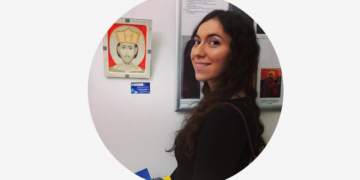













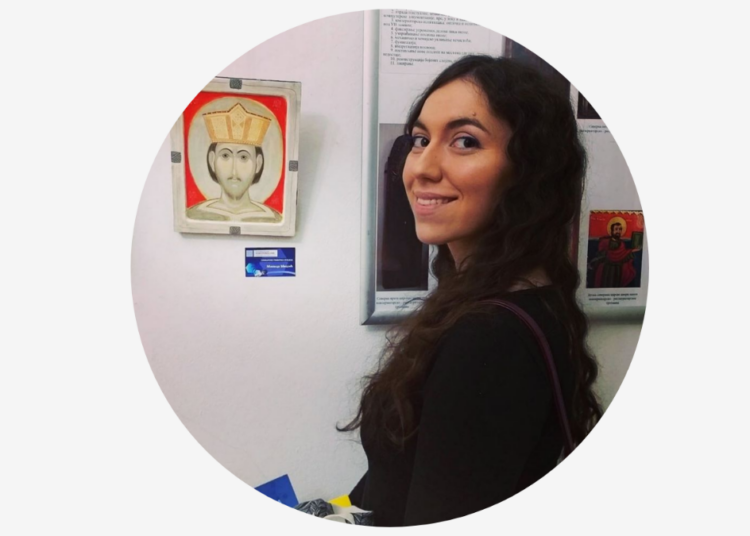
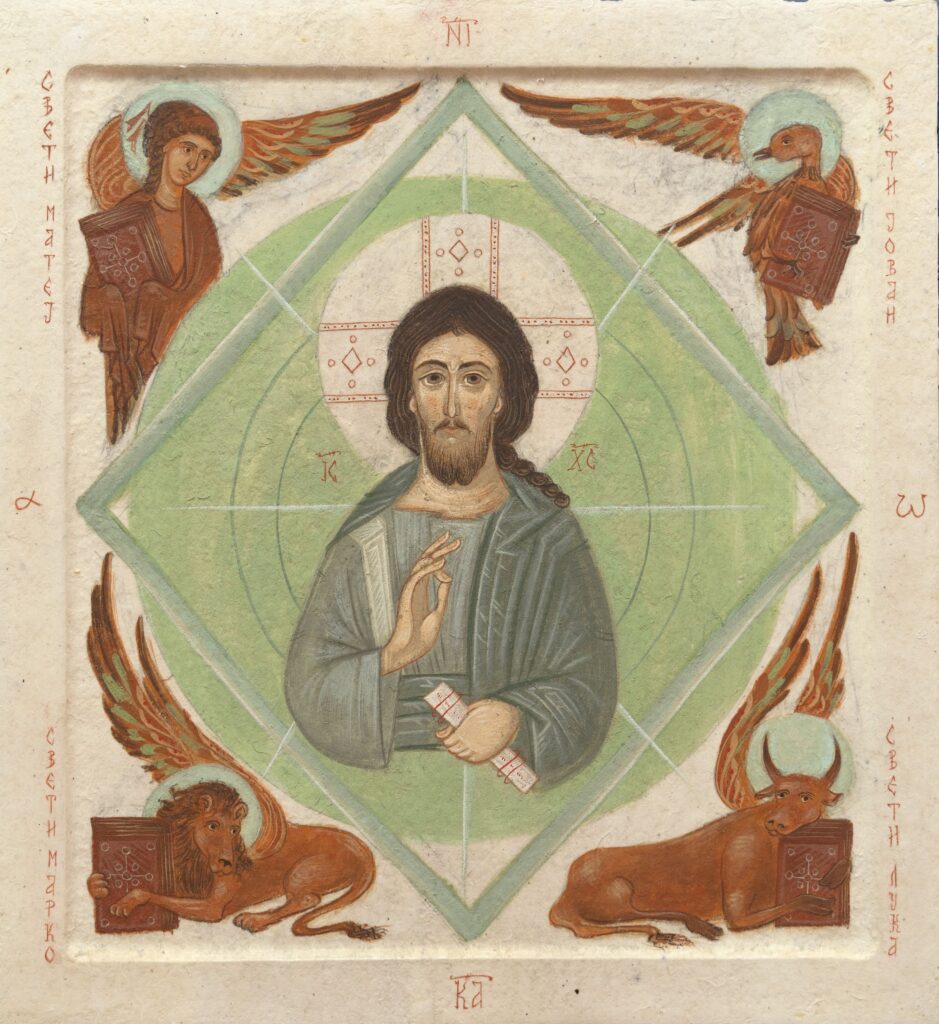
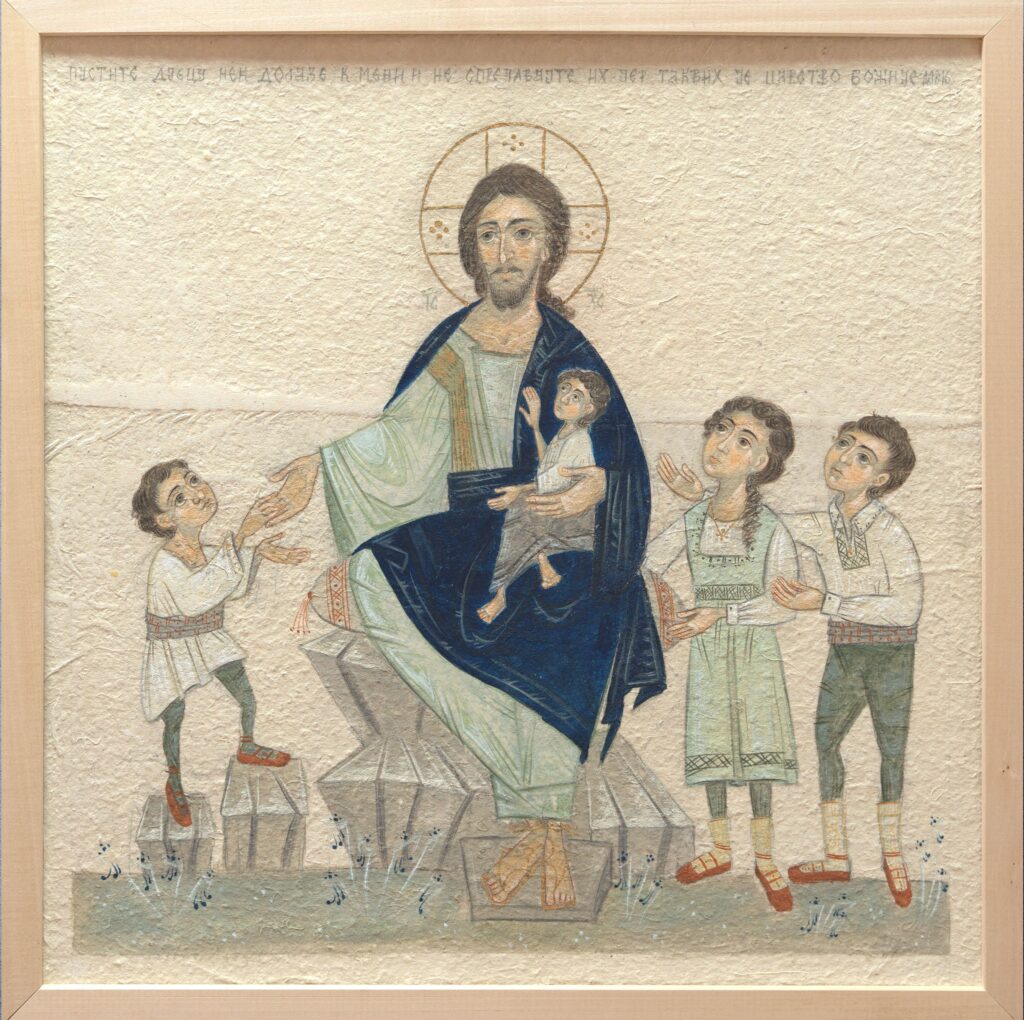
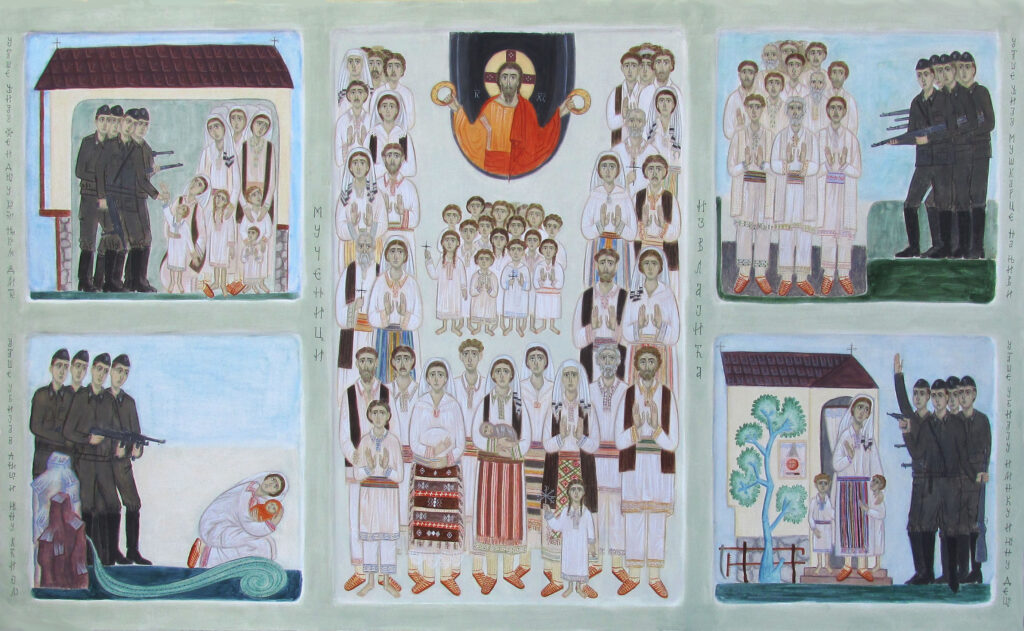
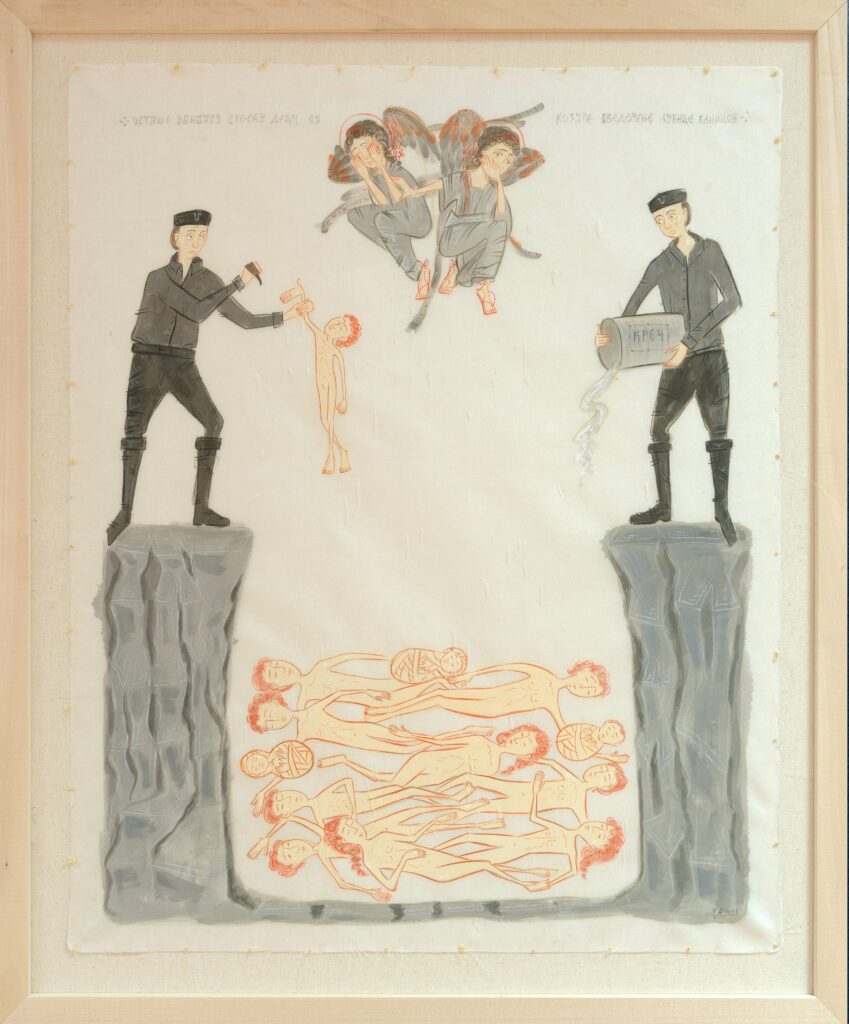
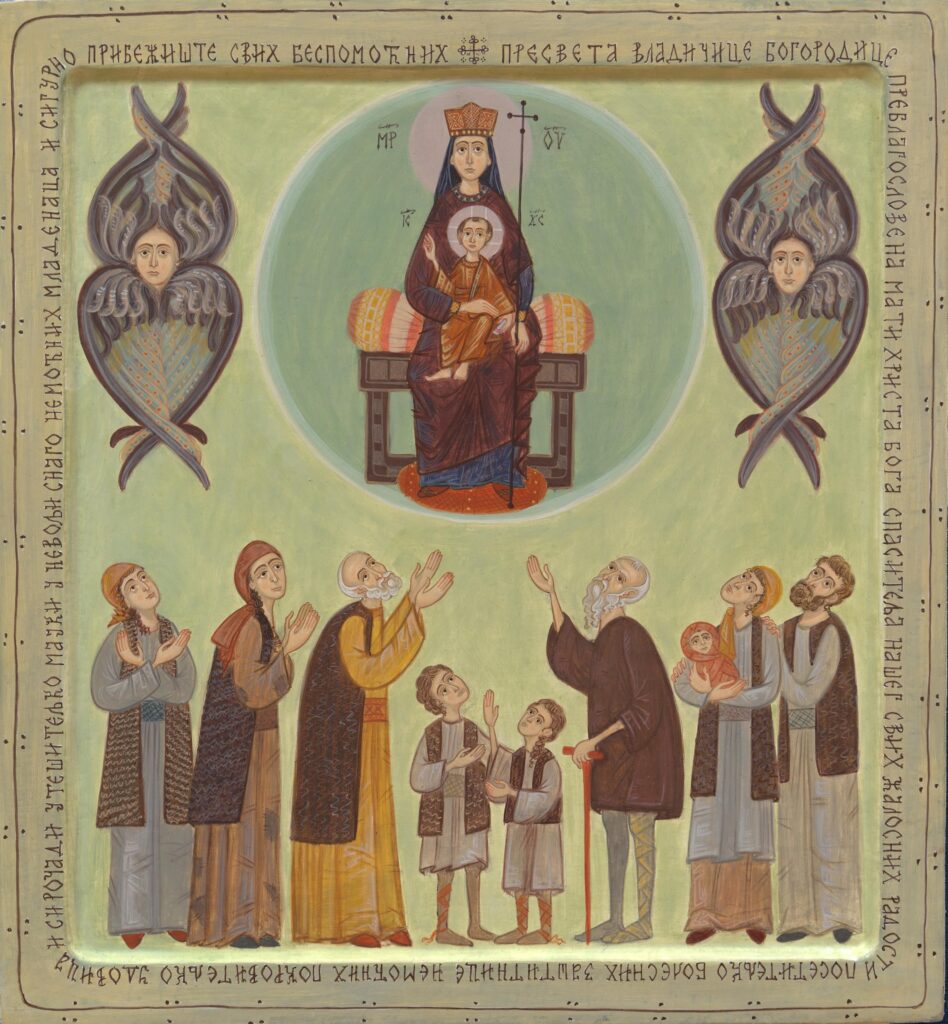



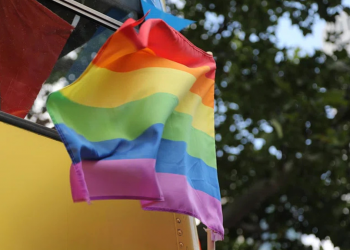

Discussion about this post